Introduction
The following write up is a reflective essay of my work done until now on the Contextualizing Design Practice. Figure 1 illustrates my process through this unit, my initial research on different topics and going ahead how it led me to human senses. In this unit I have taken the sense of sound or sound as my focus point and intend to design and develop a product around it. Dieter Rams stated (1970) “Good design makes a product useful”. There are many products available in the market currently which look good but don’t perform well. It is with this thought in mind that I intend to research and design a product that is simple as well as useful, serving a purpose.
Fig. 1 Progress tree of work done in Practice 1
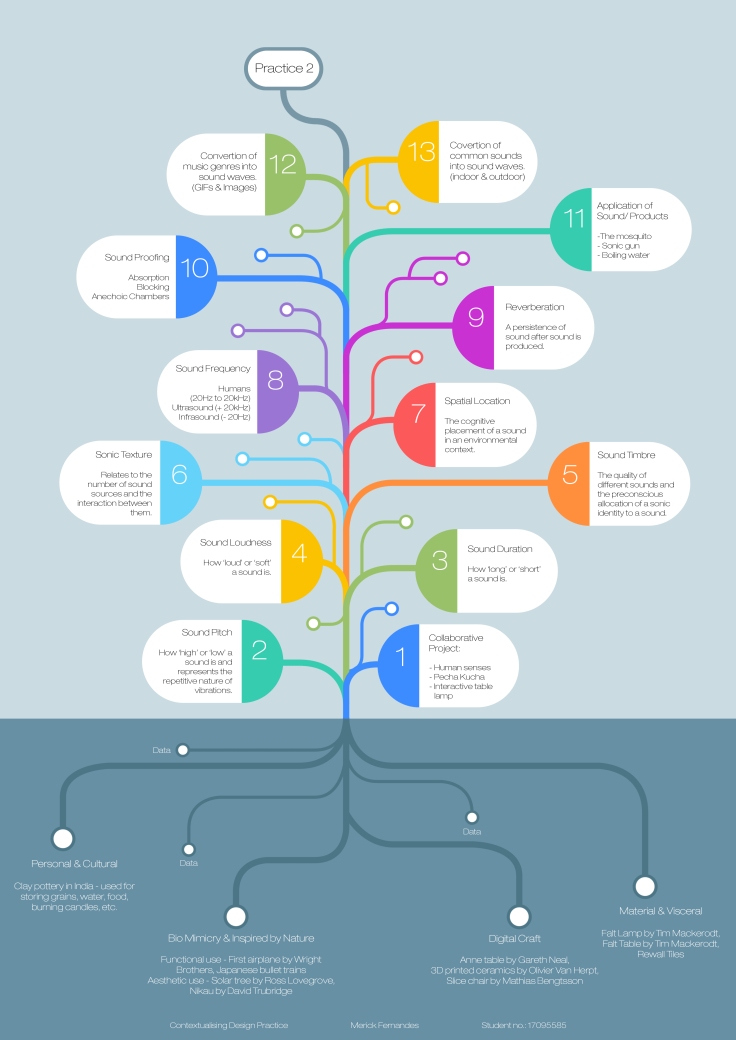
Research
To begin with we were given a couple of topics related to Product Design and had to select among them to research and learn about. The two topics I looked at were Bio Mimicry & Inspired by Nature and Digital Craft. Starting with the first topic I began by looking at the meaning of Bio Mimicry & Inspired by Nature. Looking more into it I learned that inspiration has been taken from nature for design since a long time. Inspiration taken from nature had different aspects and applications to the designing process, for functional purpose and for aesthetics. Humans are cleaver, but over time we have created massive sustainability problems that could affect future generations. To solve these global challenges there are solutions all around us. The goal for this topic is to create products or processes, new ways of living that are well adapted to life on earth over the long haul.
As stated above there are different aspects of this topic and I began by going through the functional aspect. Figure 2 depicts one of the early examples of bio mimicry, the study of birds in flight to enable human flight, a concept and theory used by the Wright brothers in 1903 who succeeded in creating the first heavier than air aircraft. There are other examples as well in this context, like the Japanese bullet trains who took inspiration from the kingfisher bird. The new designs for the trains proved effective as they were faster and consumed less electricity as compared to the previous ones.
Fig. 2 First heavier than air aircraft by the Wright Brothers (1903). Functional aspect of Bio-mimicry
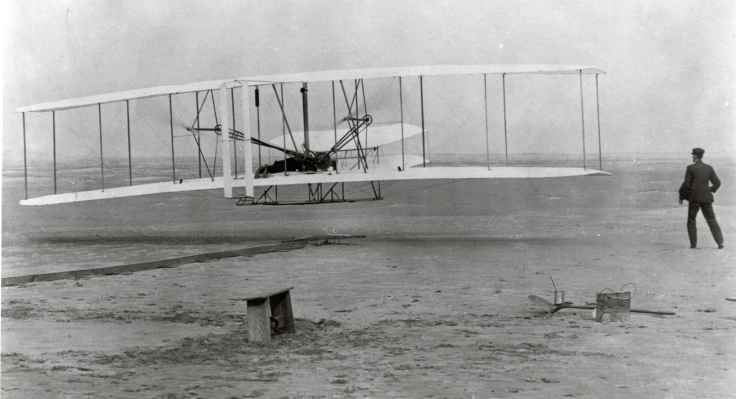
Fig. 3 Solar Tree by Ross Lovegrove (2007). Aesthetic aspect of Bio-mimicry
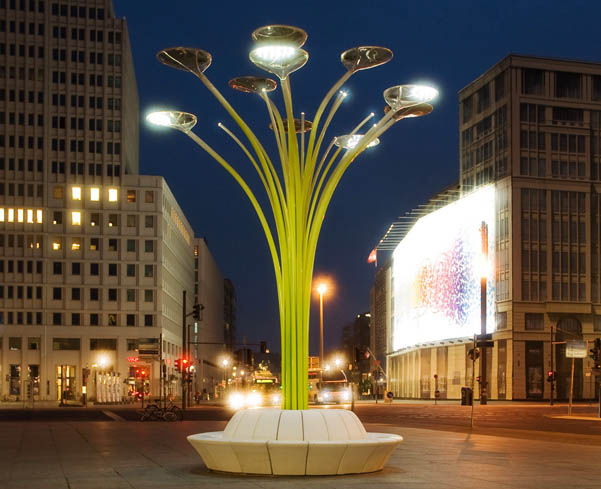
Looking at the aesthetic aspects of bio mimicry, I looked at work of various designers wherein aspects of nature were implied into the designs. This can be seen in figure 3. Good examples of the aesthetic aspect of bio mimicry are the solar tree by Ross Lovegrove, Perch Light by Mooi and Nikau by David Trubridge. All these three-mentioned works are designs in lighting, and I especially liked the work by David Trubridge as his design had a very organic and appealing feel to it.
The next topic was Digital Craft, in this topic I learned about the different processes currently being used over different available materials. Digital and Craft, in the right hands, these two contrasting approaches are combining in new ways to spark a renaissance in the art of making beautiful things. Decades ago craftsmen would have had interesting and complicated designs for products but wouldn’t be able to make them with available resources. In current times, availability in technology to produce and manufacture products simple or complicated has increased. CNC machining, Rapid Prototyping, Laser Cutting are but a few to name amongst available technologies. No longer dictating or restricting the creativity of the making process, modern technology is instead being applied in unconventional ways to enhance and assist it. Designs of products by Gareth Neal (Figure 4) and Mathias Bengtsson are good examples for this topic as it can be seen how even though being a complicated product with the help of technology it looks rather simple and elegant.
Going ahead I looked at various available materials and products and how they have been improved or enhanced over time. I looked at and came across some materials and products which I found fascinating as it had a new approach to the use of materials in the making process. One of the designs I saw were the Falt Lamp and Falt Table by Tim Mackerodt (Figure 5). I found these two products very interesting as it had an unconventional use of the concrete material. Concrete has been used in these products to create the lamp shade and the table seat, and I particularly liked the use of the material in the lamp shade as you can see two different finishes to it, one on the outside and the other on the inside. The outer surface has a smooth and clean finish, while the inside surface has a raw and natural finish of the material. Another material I came across was the Rewall tiles. Rewall is an American based company making tiles using thrown away cardboards, boxes, cans and aluminum waste. The materials are recycled and processed, and made into tiles like the making of the wood strand board. I liked the part where they haven’t painted over the material to give it a single color, rather they are processing same colored materials to make tiles revealing the materials gone into the process.
Fig. 4 Anne Table by Gareth Neal (2007). Made in American walnut wood using CNC machining
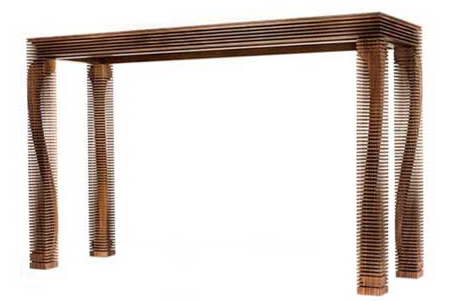
Fig. 5 Falt Table by Tim Mackerodt (2011). Materials used: wood & concrete
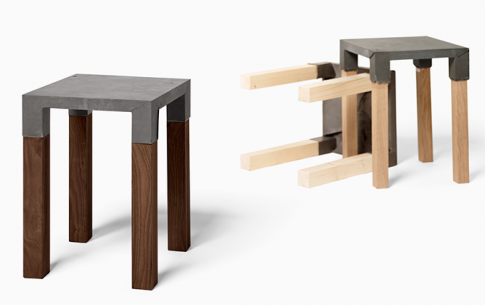
After this I looked at materials being used on a personal and cultural level back in my home country India. One material that particularly stood out was clay and its usage in pottery. Clay pottery products are a common sight in India and are used by a clear majority of people. You find shops set up in line selling similar or different clay pottery products (Figure 7). It includes products for storing grains, water, food, for burning candles amongst a few to name (Figure 6). While researching into the range of Indian clay pottery products I looked at its use in serving food. It is used by many street food vendors to sell their food or sweets. You would get the similar food at restaurants, but in metal or ceramic crockery. I realized from my own experience that eating the same food or sweet dish in clay products or other materials gave it a different feel to it. The food served in clay crockery felt authentic and genuine as compared to metal or ceramic. I understood the importance a material can play on a product giving the user a more personal touch. This research as well as everything done so far has led me to understand human senses and the sensory experience of a product. Moving forward I intend to use sound as my focus point around which I can design and develop a product.
Fig. 6 Indian clay pottery
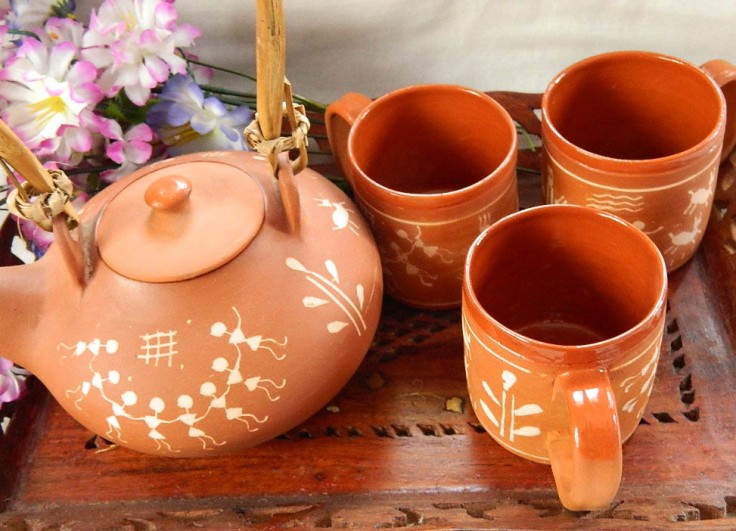
Fig. 7 Indian clay pottery

Collaborative Project
The next part of my practice was the collaborative project. I worked with Tom for this project who is a first-year part time student. Prior to this we all were introduced to the Pecha Kucha presentation technique wherein we had to create and explain our work done in twenty slides and twenty seconds per slide. We had to present it amongst a group of students from different design fields, and this was helpful as it gave me ideas and insights of different areas and aspects that I didn’t consider looking at. We began the collaborative project by sharing with each other our Pecha Kucha presentations, giving each other, an idea of our work done and what we intended to do in our individual projects. Both our work was around the human senses, mine to do with the sense of sound and Tom’s with the tactile sense, having products that are interactable. Prior to the course both of us had visited the London Design Week that happened in September 2017, and he shared with me some of the products he came across there and found interesting. Some of the products were of lighting which were well designed. They had a touch of personalization to them giving them a sense of character.
In my initial research I had looked at Bio Mimicry & Inspired by Nature and I wanted to use that part of my research into our design. We decided to work on a lighting product and began by looking at available and existing products which were organic in design and inspired by nature. We had a look at works of various designers, some whose designs were simple and neat; and some whose works has a same form, creating different patterns in different designs. I found it interesting and intriguing how a single form was used in a series of designs to create different patterns in the products. We finalized to work on a design for a table lamp, something that would be interactive with the end user. We began by sketching out our ideas, trying to explore different possibilities. We worked on some designs which were organic in form and which would make the product interactive. For making such an interactive table lamp we thought of designing a table lamp wherein the user itself could adjust the brightness on their own with some feature of the lamp.
Going ahead we decided to work on two different variants for the design, one having a wooden housing for its base and the other with a completely transparent base (Figure 9). I created the CAD files for the wooden and acrylic bases which we got cut out by the laser cutting machine. The wooden housing base was made by wrapping around a 3mm ply wood strip around the laser cut pieces, making the housing for the wiring and lights to sit in. The transparent base was laser cut having slits into each piece. These cuts were given to each piece which made it easy to fix one piece into another. I found the wrapping of the 3mm ply wood piece interesting and challenging as I haven’t worked on such a process before, but with some help and guidance from the workshop staff I was able to attach the pieces. The lamp shades for both variants were kept the same and we took inspiration from flowers to create the lamp shade, making it look like petals. The petals for the designs were made in translucent acrylic sheets which we cut out by hand. Slits were given to each petal at the bottom which made it easy to fit and place them into the wooden base. We didn’t glue the acrylic petals to the base, giving them the flexibility of little movement while being adjusted.
Fig. 8 Tom removing LEDs from a pocket torch. The same process was used to solder the LEDs onto the wooden base.
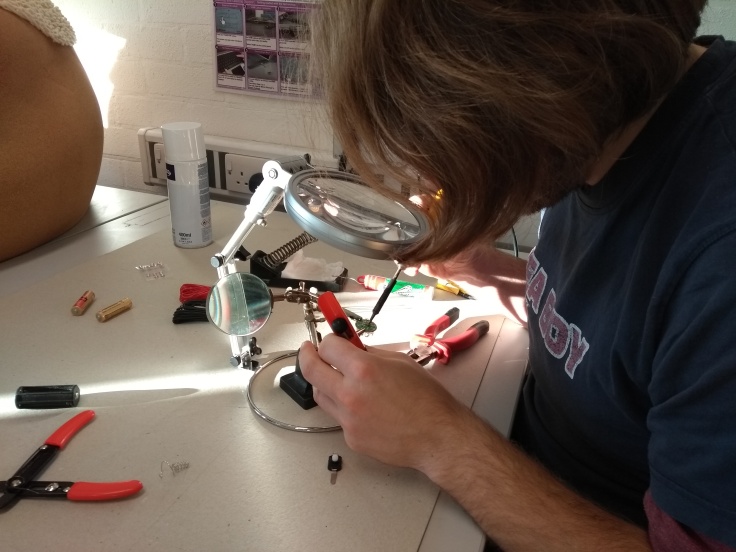
Fig. 9 Two design variant for the interactive table lamp. Materials used: transparent acrylic sheet and rod, frosted plastic sheet, ply wood and metal threaded rod.
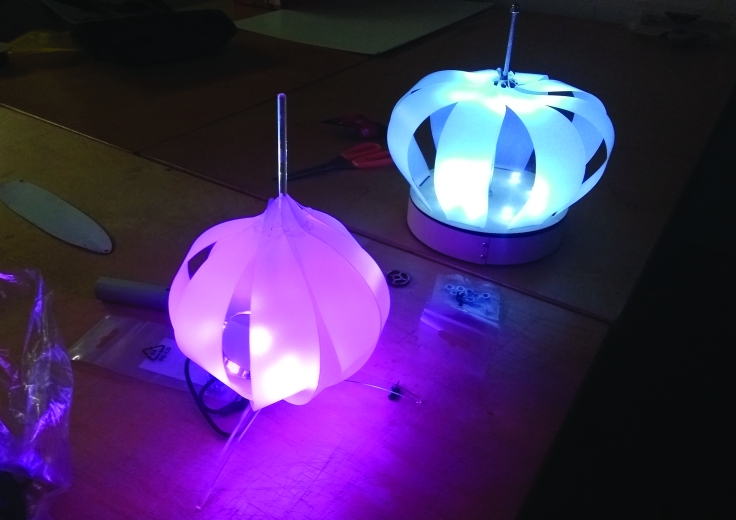
The LEDs for the lamp were taken from a pocket torch and were attached inside the wooden housing base (Figure 8). They were soldered individually by Tom as he has more knowledge and experience in it. For the transparent acrylic base, a LED strip was used wherein you could adjust the lights accordingly to a variation of speeds. The petals made for both the design variants were supposed to move vertically on a rod for the user to adjust the brightness, and for this feature we used two different materials for each design. A metal threaded rod was used for the wooden base and a transparent acrylic rod was used for the transparent base. Adjusting the brightness was more effective and easier on the transparent model as moving the petals was easy while on the other hand adjusting it on the wooden base model was a bit time consuming. Overall, I learned new techniques during this collaborative project which would help me down the line, the new methods to work in the workshop and learning the basics of soldering were some of the few.
Sound
My research done until now led me to the human senses and the way people perceive a product. My initial idea for my practice was to work around sound and music, and creating ways for the disabled to perceive it. My assessment in December was instrumental as the feedback helped me look at different aspects which I didn’t take into consideration. Over time during my work my ideas have started to change and develop from that initial thought and I have started to look at sound from different sides.
I started by looking at sound as a product and the different factors that play a part in it. Sound is a vibration that travels through air or another medium and can be heard when it reaches a person’s ears. There is a wide range of sound wave frequencies, some which can be perceived by humans and some which can’t. Humans can hear and perceive sound waves with frequencies between 20Hz to 20kHz (20,000Hz). Sound waves above the frequency of 20kHz are known as ultrasound and those below 20Hz are known as infrasound.
I looked at the different ways in which sound waves are analyzed, namely pitch, duration, loudness, timbre, sonic texture and spatial location. Pitch is perceived as how low or high a sound is and represents the repetitive nature of the vibrations that makes up the sound. Duration is perceived as how long or short a sound is and relates to the signals created by nerve responses to sound.
Fig. 10 Spatial location
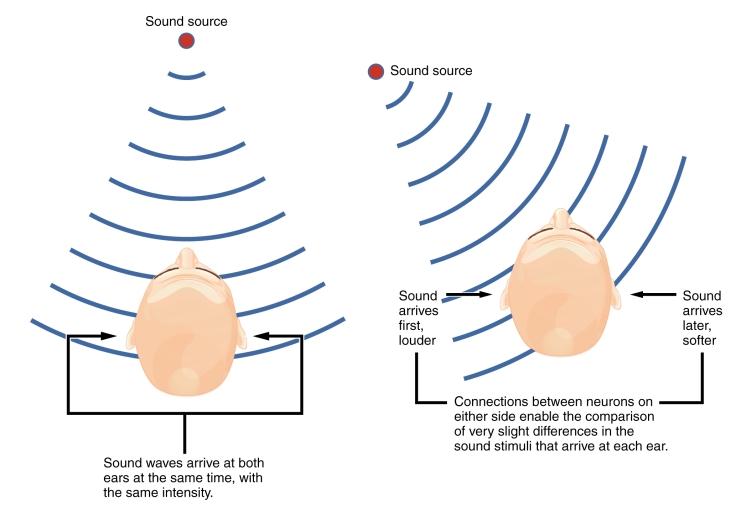
Fig. 11 Sound Pitch
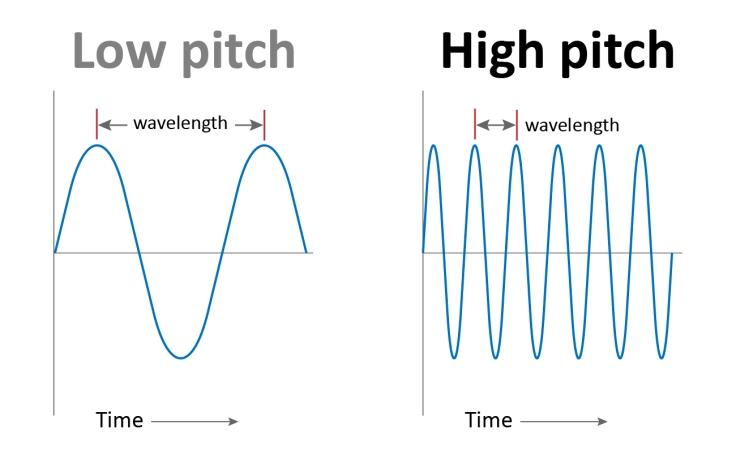
Loudness is perceived as how loud or soft a sound is and relates to the totaled number of auditory nerve stimulators over a short cyclic period. Timbre is the quality of different sounds and represents the preconscious allocation of a sonic identity to a sound. Sonic texture is the number of sound sources and the interaction between them. Spatial location is the cognitive placement of a sound on the horizontal and vertical axes, the distance from the sound and the characteristics of the sonic environment.
Going ahead I looked at the different ranges of frequencies. Under ideal laboratory conditions, humans can hear sounds as low as 12Hz and as high as 28kHz. Humans are most sensitive to frequencies between 2000 to 5000 Hz. There are wide range of frequencies that aren’t perceivable by humans but by certain animals. For example, bats use frequencies for echolocation, ranges that we can’t hear. They use these frequencies to locate their direction based on the reflections that bounce back from different surfaces present in the environment. A similar comparison can be made to whales who use frequencies for location under water. An application of such in human life and an example of bio mimicry is the sonar used in under water submarines.
I looked at reverberation, which is the persistence of sound after sound is produced. It is created when a sound or signal is reflected causing many reflections to build up and then decay as the sound is absorbed by the surfaces present in the surrounding. This aspect of sound is not restricted to indoor spaces but also exits in forests and other outdoor environments as well. This feature of sound was one I found interesting as I then began reading about sound proofing and sound blocking. At first both these terms meant the same to me, but after reading about them I understood the differences between both and the various types of materials that are used for sound proofing or sound blocking a room or space. Like this, I came across Anechoic Chambers, a sort of sound proof room. This kind of sound proofed room consists of baffles with highly absorptive material arranged in such a way that the fraction of sound they do reflect is directed towards another baffle instead of back to the room. The main purpose of such a room is to absorb as much sound as possible.
I looked at the sounds created by different products and environments having a wide range of decibels. The range of these sounds were from 30dB to 140dB including sounds of a person’s whisper to a motorcycle to the Boeing 747. I learnt and understood the different ranges and after which range it starts to affect and irritate an individual.
Fig. 12 The Mosquito. Used to deter loitering by young people by emitting sound at high frequency

Fig. 13 Sonic Gun. Used to injure, incapacitate or kill a target.
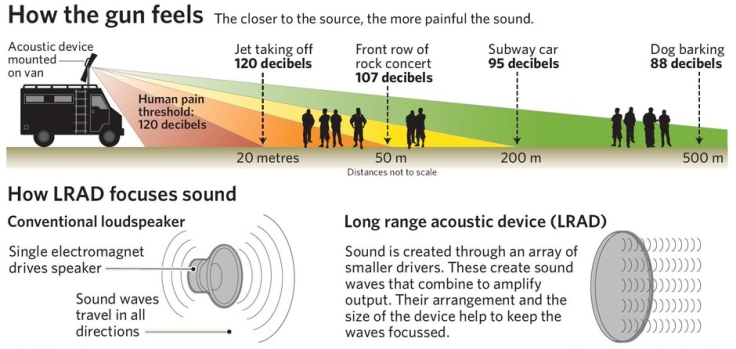
After this I looked at the speed of sound which differed according to the temperature in the environment. Heat, like sound is a form of kinetic energy. When molecules are at high temperatures they have more energy and thus vibrate faster. The faster the molecules vibrate, more quicker sound waves travel. Materials used for sound products also play a role in the speed of sound and influence it.
After understanding the fundamentals and principles of sound I started looking at various products wherein sound is being used or applied. One of the products I initially looked at was The Mosquito (Figure 12), a product which transmits lower frequencies which are only audible to people below the age of 25. Such a product is usually installed outside restaurants or supermarkets, with the intention of preventing vandalism and trouble from the youth. Another product I looked at was the Sonic Gun (Figure 13), a product being used by the police to maintain and control mobs or riots. It is a product placed and fitted onto an armored vehicle which transmits frequencies of sound causing discomfort to people. The closer you are to it the more negative effects it could have on you.
I started looking at furniture designs, wherein I came across some which had the use of sound absorption materials which said the furniture helped maintain the level of sound in the environment. An example of such an idea can be seen in furniture designed by INTO, a design company from Helsinki. Their design solutions are said to dramatically cut down noise in an open space. Another good example for such and can be seen in figure 14 is that of furniture designed by Johan Kauppi using sound absorbing materials. The sound dampening effect works a bit like a reversed loudspeaker, where sound is absorbed instead of being amplified.
Going forward I took a couple of music soundtracks of different genres and can be seen in figure 15 how I converted them into visual sound waves. This was an interesting experiment as each soundtrack could be distinguished from the other with differing levels in the waves created. After understanding the sound waves in a visual form, I started looking at and recording sounds around me and some that I came across on the internet. The list of sounds I noted ranged from the opening of a bottle to the moving of furniture to that of using crockery while eating dinner. I then converted these sounds into visual sound waves as done before to see how each one differed from the next.
Fig. 14 Sound absorbing furniture by Johan Kauppi
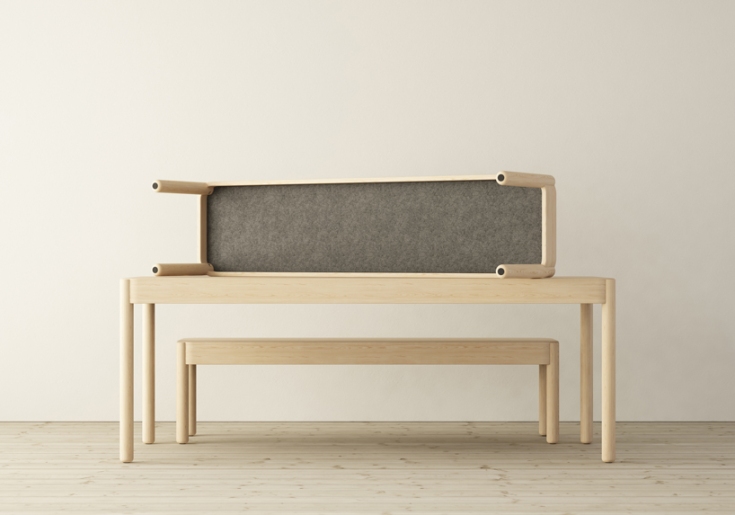
Fig. 15 Visual sound waves created of a music soundtrack.
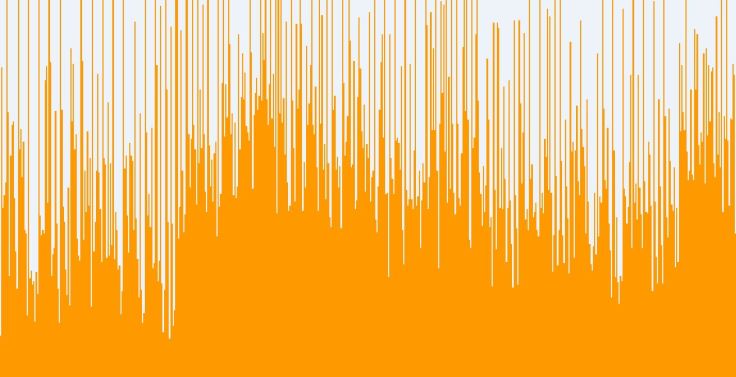
Conclusion
I have looked at a wide range of aspects pertaining to sound and came across many interesting features and products. Concurrently I looked at different types of sounds and tried creating visuals out of them. There may be other ways of creating visuals from recorded sounds, and I intend to look at them and try creating different forms and patterns. Going ahead into practice two I intend to work on designs around furniture, and looking at possible ways in which I can use and apply my research into those designs.
References
First Airplane. Digital Image. Wikimedia Commons. Web. 6 October 2017. commons.wikimedia.org/wiki/File:The_Wright_Brothers_First_Heavier-than-air_Flight_-_GPN-2002-000128.jpg
Solar Tree. Digital Image. A1 Lighting. Web. 7 October 2017. http://www.a1lightingmagazine.com/latest-news/ross-lovegroves-solar-tree-lights-up-london/
Gareth Neal Furniture. Digital Image. Gareth Neal. Web. 8 October 2017. http://garethneal.co.uk/anne-table/
Concrete Products. Digital Image. Tim Mackerodt. Web. 27 October 2017. https://www.timmackerodt.de/?portfolio=falt-stool
Indian Pottery. Digital Image. Pinterest. Web. 27 October 2017. https://www.pinterest.com/pin/552816922982629353/
Indian Pottery. Digital Image. Guide Trip. Web. 5 October 2014. http://blog.guidetrip.com/potters-colony-delhi/
Spatial Location. Digital Image. I Code Like a Girl. Web. 23 June 2016. https://icodelikeagirl.com/tag/binaural/
Sound Pitch. Digital Image. Learn Genetics. Web. http://learn.genetics.utah.edu/content/senses/hearing/
The Mosquito Alarm. Digital Image. Howstuffworks. Web. 19 November 2015. https://science.howstuffworks.com/mosquito-alarm-may-be-breaching-your-human-rights.htm
Sonic Weapon. Digital Image. The Funambulist. Web. 2011. https://thefunambulist.net/architectural-projects/politics-sonic-weapons-manufacturing-material-waves-of-violence
Sound Absorbing Furniture. Digital Image. Pinterest. Web. https://www.pinterest.com/pin/435371488968721725/
Bibliography
https://www.smithsonianmag.com/science-nature/how-biomimicry-is-inspiring-human-innovation-17924040/
https://www.popsci.com/science/article/2011-03/gallery-six-ways-biomimicry-reshaping-future
https://www.ecowatch.com/biomimicry-janine-benyus-2468401986.html
https://www.livescience.com/28873-cool-technologies-inspired-by-nature.html
https://arch.usc.edu/topics/digital-craft
https://www.prote.in/journal/articles/digital-craft
http://kasiamackowiak.co.uk/2014/12/digital-craft-1/
http://www.telegraph.co.uk/culture/books/bookreviews/11422338/The-joy-of-craft-in-a-digital-age.html
https://www.autodesk.com/redshift/postdigital-artisans/
https://www.fastcodesign.com/3065607/11-exciting-new-materials-designers-should-watch
https://freshome.com/2012/02/13/10-innovative-materials-to-look-out-for-in-2012/
https://www.timmackerodt.de/?portfolio=falt-stool
https://gizmodo.com/5-of-the-craziest-new-man-made-materials-893364032
https://elemental.green/rewall-recycled-high-performance-roof-and-wall-materials/
https://business.officedepot.com/article/prelogin/green/45f5ca0f7a1313e611b1e5c5bbd07746
https://iaac.net/research-projects/self-sufficiency/hydroceramic/
https://materia.nl/article/hydroceramic-intelligent-material-prototype/
https://www.designboom.com/architecture/iaac-dmic-hydroceramic-passive-cooling-system-09-18-2014/
https://en.wikipedia.org/wiki/Sound
https://en.wikipedia.org/wiki/Hearing_range
https://en.wikipedia.org/wiki/The_Mosquito
https://en.wikipedia.org/wiki/Sonic_weapon
https://www.nde-ed.org/EducationResources/HighSchool/Sound/frequencypitch.htm
https://listverse.com/2012/11/14/top-10-amazing-uses-for-sound/
https://www.soundproofcow.com/product-category/sound-absorption-materials/
https://en.wikipedia.org/wiki/Absorption_(acoustics)
http://www.soundproofingtips.com/soundproofing-materials/
https://www.tolearnenglish.com/exercises/exercise-english-2/exercise-english-63079.php
https://www.lsnglobal.com/news/article/6241/sound-design-turning-songs-into-furniture
http://blog.sonos.com/en-gb/sonos-x-kbh-furniture-with-sound-design/
Appendix A
Images of works on Bio-mimicry & Inspired on nature
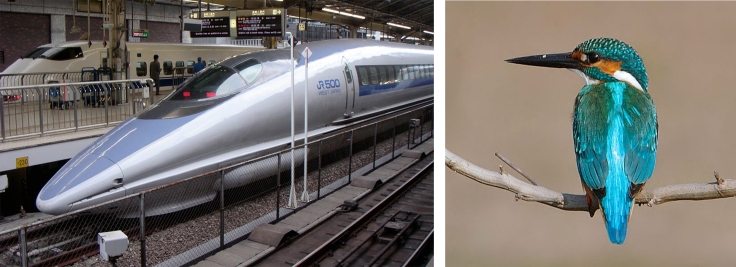
Japanese Bullet Trains
The inspiration for the new designs for the high-speed bullet trains were taken from the beak of the kingfisher bird. The next gen trains were 10% faster and consumed 15% less electricity.
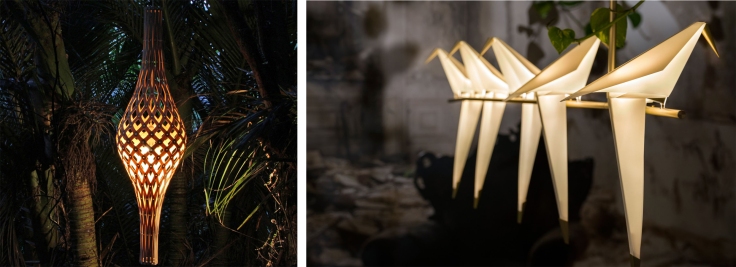
Nikau by David Trubridge & Perch Light by Moooi
Both these designs have the aesthetic aspects of bio mimicry. The design by David Trubridge has a subtle inference using organic forms in design while the design by Moooi has a direct reference to the form of a bird.
Appendix B
Images of works on Digital Craft
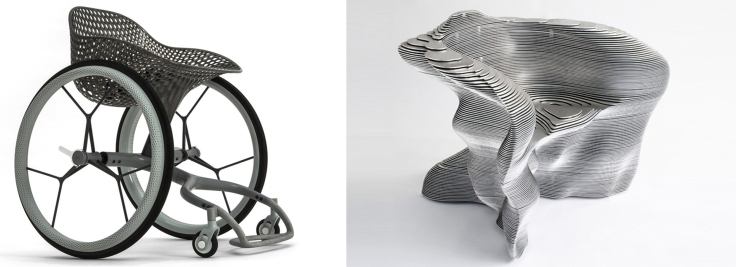
Go Wheelchair by Layer Lab & Slice Chair Aluminum by Mathias Bengtsson
The seat for the wheelchair has an organic form inspired by nature and craftily created using the rapid prototyping method. The slice chair as well has an organic form in its design. The whole design has been broken down in layers and made using the CNC milling technique.
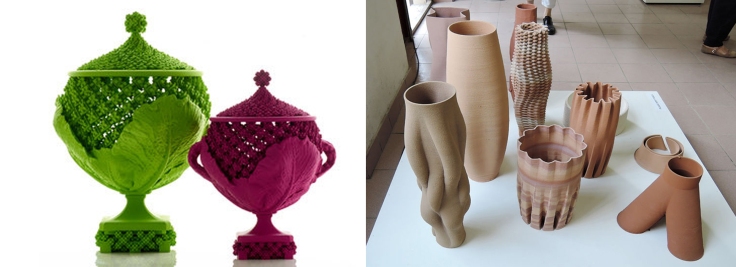
Romanesco I + II by Michael Eden & 3D printed ceramics by Olivier Van Herpt
Both these designs have been made using the rapid prototyping technique using different materials, namely plastic and ceramics. Both these designs have a level of simplicity and complexity to them which has been able to be captured using this making process.
Appendix C
Images of works on the use of new materials

Rewall Tiles
Rewall, an American company produces tiles using thrown away card board, boxes, cans and such waste. They’re tiles have an element of design as similar colored materials are processed together giving the finished tile a single color rather than coloring over it. Such a process reveals the materials gone in the process.
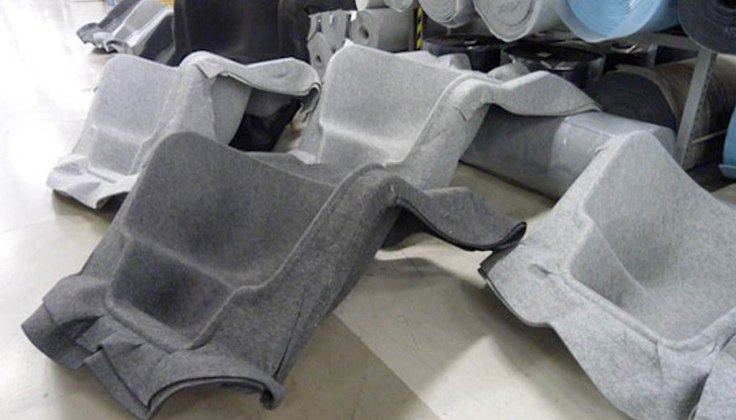
Karta Pack
A 100% post-consumer material, which has the feel of cotton but the rigidity of plastic, is made from recycled cotton fibers, sourced from discarded clothing items. A similar manufacturing process to that of carbon fiber or fiber glass using the mold and resin technique.
Appendix D
Images of my research into Sound
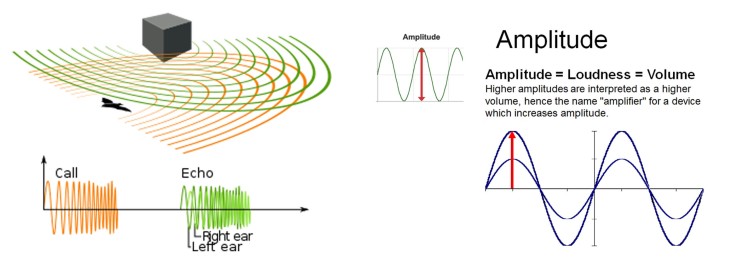
Echolocation & Amplitude
Echolocation is the method used by bats for locating obstacles in their way and to detect a prey. Amplitude or loudness is an aspect of sound which is perceived as how ‘loud’ or ‘soft’ a sound is.
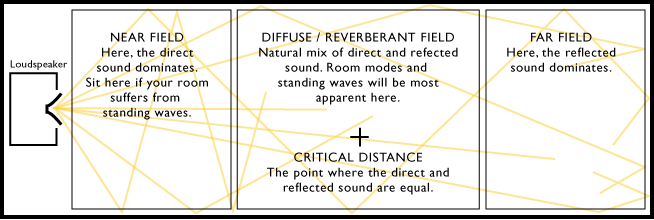
Reverberation
It is the persistence of sound after sound has been produced. It is created when a sound or signal is reflected causing many reflections to build up and then decay as the sound is absorbed by the surfaces of objects in the environment. A simple example of such would be an auditorium, wherein the level of sound is different depending on where you sit.
Appendix E
Images of furniture designs relating to sound
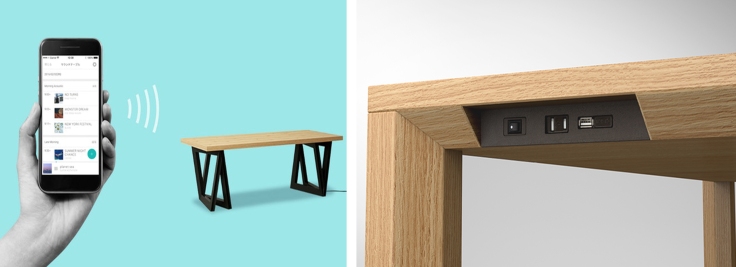
Sound Table
It is a table designed to play music and clear spaces for relaxation and comfort. Can be connected to your smartphone via a mobile app and can notify you of changes in weather after uploading your location.
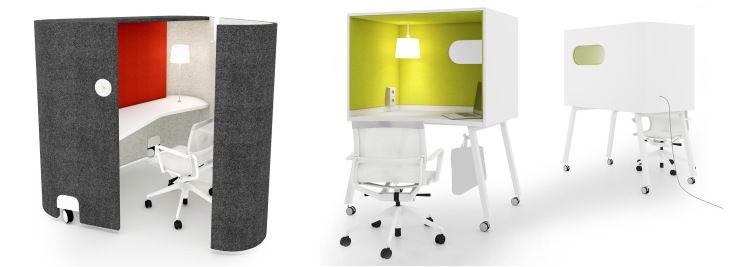
Sound absorbing furniture by INTO
A range of office furniture designs which effectively reduce noise pollution in open spaces.

Leave a comment